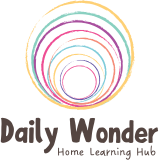- Unit Studies
- >
- Grade 3
- >
- Grade 3 Unit 5 The Wonder of Expression
Grade 3 Unit 5 The Wonder of Expression
Unlock the secrets of language and storytelling with The Wonder of Expression unit! This captivating unit is designed to foster self-expression and language mastery in students and is based on the renowned work of Janet Langley and Jennifer Militzer-Kopperl's "The Roadmap to Literacy" program. The unit delves into the intricacies of the English language, guiding students through the Alphabetic, Pattern, and Meaning layers. With 33 phonics rules introduced over grades 1 through 3, students will develop strong foundations in reading and spelling through a variety of interactive games and activities. From decoding to encoding, the Daily Wonder Literacy program offers comprehensive writing and reading development support.
In The Wonder of Expression unit, students will embark on a journey of discovery, exploring the secrets hidden within the English language through poetry, stories, and playful games. You will focus on introducing the four sentence types, enhancing punctuation skills, introducing phonics rules, and continuing to work on vocabulary and spelling rules. This holistic creative approach not only enhances language skills but also nurtures a deep understanding of language in a fun and imaginative way.
Ignite your child's creativity and joy for language with The Wonder of Expression unit. Get ready to witness the magic of self-expression unfold!
This purchase includes one digital curriculum unit with 15 days of lesson plans and 5 days of flexible projects. This unit will inspire you with beautiful images, clear instructions and exciting project ideas.
And that's not all. You will also gain access to the Wonder Hub, which includes supporting documents, videos, resources, and community.
The Wonder of Expression
Learning Standards
Concept: Language and story can be a source of creativity and joy.
Connection: Your child will learn about the secrets hidden within the English language. They will use poetry, stories, and games to uncover these secrets.
Concept: Using language in creative and playful ways helps us understand how language works.
Connection: Poetry and games will be the backdrop of the playful discovery of the secrets of language.

